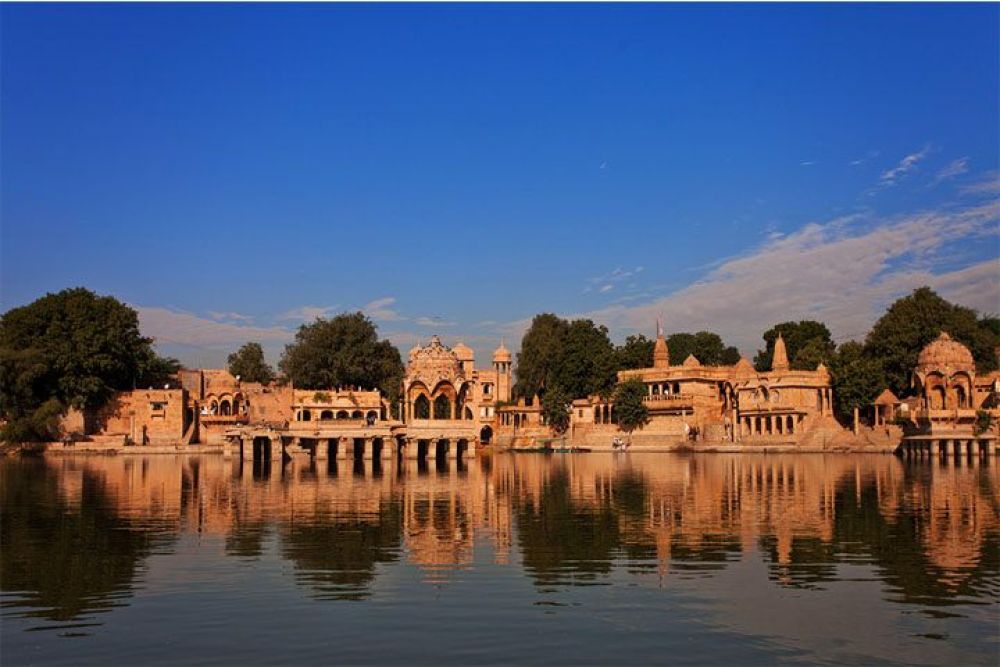

Gadisar Lake, located in Jaisalmer, Rajasthan, is an artificial lake that holds a special place in the history of Indian tourism. This lake is not just a tourist spot but an embodiment of the rich cultural heritage of the region. Constructed in 1367 AD by Maharawal Gadsi Singh, the lake served as the main source of water for the arid city of Jaisalmer before the modern water supply system was introduced.
The history of tourism at Gadisar Lake can be traced back to the time of its creation. The Maharawal built this lake to solve the water scarcity problem in the region, and it quickly became vital for survival. With time, surrounding temples, shrines, and ghats (steps leading into the water) were built, adding to its attraction as a pilgrimage site as well as a leisure destination for the local populace.
Over the centuries, Gadisar Lake has become a symbol of Jaisalmer's historical and cultural identity, drawing visitors from far and wide. During the British colonial era, it was already recognized as a significant attraction for travelers interested in India's architectural marvels and the Rajputana grandeur. Post-independence, its popularity continued to grow as part of the larger narrative of the Thar Desert and the Golden City of Jaisalmer.
With the advent of modern tourism, several initiatives have been taken to preserve Gadisar Lake and its surrounding architecture. The lake is now a popular site for boat rides, which offer stunning views of the temples and ghats. It has also become a favored spot for photographers and culture enthusiasts who come to soak in the scenic beauty and tranquil atmosphere.
Tourists can now enjoy cultural programs like folk music and dances on the banks, which are especially popular during the cooler winter months. Additionally, as environmental awareness has risen, there has been an increased focus on maintaining the lake's ecosystem, attracting eco-conscious travelers interested in sustainable tourism practices.
The latest trend in tourism at Gadisar Lake focuses on providing authentic experiences that merge leisure with learning. Visitors are increasingly looking for local guides who can share stories and facts about the lake's history and its role in Jaisalmer's culture. There is also a growing interest in bird-watching, as the lake area is home to various migratory birds, particularly during the winter months.
The use of technology, such as audio guides and mobile apps, has been introduced to enhance the visitor experience. This allows tourists to explore the lake at their own pace with a wealth of information at their fingertips.
Another trend is the promotion of Gadisar Lake as a venue for photography tours and workshops. Its picturesque landscapes and golden hues during sunrise and sunset make it a perfect spot for budding and professional photographers alike.
In conclusion, Gadisar Lake continues to be a significant historical and cultural site in Jaisalmer, constantly adapting to the changing interests of tourists while preserving its original charm and significance. The efforts to combine tourism with heritage conservation ensure that Gadisar Lake remains a cherished destination for generations to come.